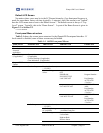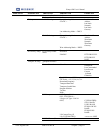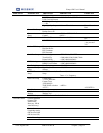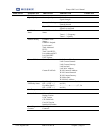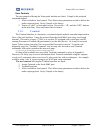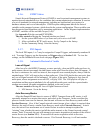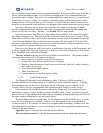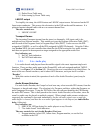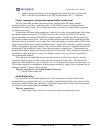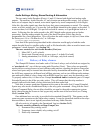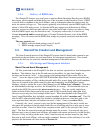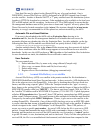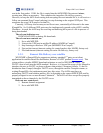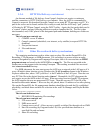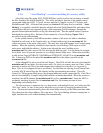
iPump 6420 User’s Manual
www.wegener.com 800070-01 Rev B Chapter 3, Page 70
11. Delete Preset Table entry
12. Select tuning by Preset Table entry
LNB DC output
To simplify site setup, the i6420 features an LNB DC output source fed outward on the RF
Input center conductor. This powers the electronics in the LNB on the satellite antenna. It is
protected against shorted loads with an over-current thermal fuse.
The user controls are:
1. LNB DC ON/OFF
Transport Demux
The incoming Transport stream from the tuner (or alternately, ASI-input card) is de-
multiplexed in a software module. This module recovers the Program Allocation Table (PAT),
and for each of the Programs listed, a Program Map Table (PMT). It also recovers the PID
assigned to COMPEL, as well as all the PIDs assigned for MPE/IP channels. Using the Tables
(see Section 3.2.2), the unit controller then identifies the PIDs bearing the live audio streams,
and those are passed to decompression stages assigned to the appropriate audio Port.
Key indicators are:
1. No PAT fault indication
2. No PMT fault indication
3.2.2. Live Audio play
Live audio decode and playout from the satellite signal is the most important single unit
function. There are three audio ports in the iPump6420, with each assigned multiple “MPEG
decoders” (see Figure 1-3 in Section 1.3). However, the user is cautioned to be careful here: In
most of the user control interfaces, and in other i6420 literature, each port itself is called a
“Decoder”.
With this caution in mind, the operation of each of the Audio Decoders (ports) may be
described.
Audio Stream Selection
For each Audio Decoder, the Compel or local user may select an audio PES stream, from the
Transport, to decode and output. The selection is by Program, and then, within that Program, an
audio Language Descriptor. Using the PSI Tables, the unit software identifies the PID bearing
the audio PES stream. This is then passed to the correct Audio Decoder (or Decoders, since the
same live audio may be played on multiple outputs). Where simple audio stream switches are
requested, the command is executed immediately, but the old audio signal runs on until the
audio buffer is cleared, and then the new audio signal appears in the output (see Audio Buffer
delay, following).
Key indicators are:
1. SERVICES LED on during live audio playout on any Decoder
2. “No Audio found” fault indication
The user controls, for each Audio Decoder (Port) are:
1. Program number (select OFF, follow-tune, Program number, or use the first
available in the PAT



